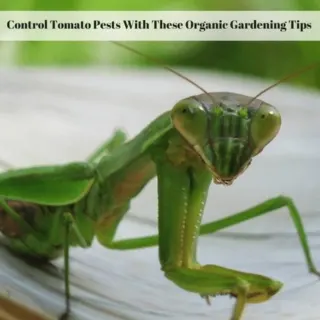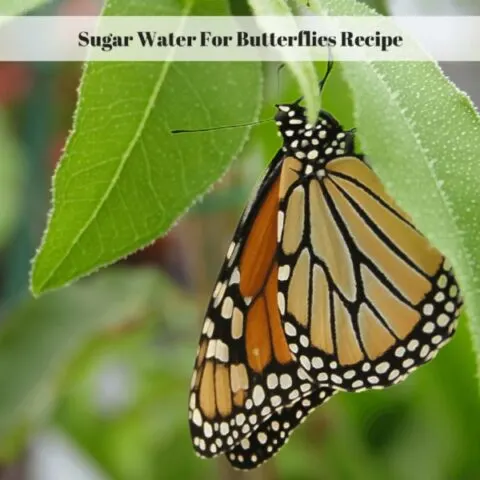Pollinator-Friendly Plants: Nectar-Infused Delights
Embark on a journey through the garden of knowledge, where we're about to unfold the captivating alliance between native plants and pollinators.
Beyond the myriad benefits native plants bring to our gardens, it's their irresistible charm for pollinators that truly steals the spotlight.
Let's unravel the secrets behind this magnetic attraction and discover how it can elevate your gardening endeavors, creating a thriving ecosystem.
The Colorful Seduction
Picture this: plants using the art of seduction through color to captivate the attention of their pollinators.
Radiant hues act as nature's flashy billboards, advertising the nectar-rich treasure within.
It's fascinating to note that the color spectrum perceived by pollinators differs from what humans see.
Bees favor blues and purples, while hummingbirds are drawn to red and orange blooms.
A diverse palette of vibrant colors in your garden can entice a broad range of pollinators.
Aromatic Allure
Plants take their allure a step further with enticing aromas.
The fragrance emitted by certain blooms is a clever tactic to attract prospecting pollinators.
From potent and pungent to soft and sweet, these scents beckon bees, butterflies, bats, and birds from far and wide.
Irresistible fragrances from plants like lavender, sweet alyssum, and mint make your garden a haven for beneficial pollinators.
Nectar: The Sweet Temptation
At the heart of this pollinator-plant romance is the sugary allure of nectar.
This liquid gold serves as a vital energy source for birds and insects.
Native plants offer a nectar cocktail perfectly tailored to the dietary needs of local pollinators.
The shape, size, and structure of flowers also play crucial roles, with tubular flowers catering to hummingbirds and certain moths equipped with long proboscises.
Timing is Everything
The timing of blooms becomes a crucial factor in the successful relationship between plants and pollinators.
Many native plants have evolved to bloom precisely when their primary pollinators are most active.
Some night-blooming species, for example, synchronize their blossoming with the nocturnal habits of specific moths or bats.
Invisible Guides and Patterns
Plants often utilize patterns and markings, invisible to human eyes, to guide pollinators to their nectar stores.
These "nectar guides" are remarkably effective at directing bees and butterflies toward their target, showcasing the intricate dance between visual cues and pollinator preferences.
The Enchanting Dance
In essence, the magic of attracting pollinators lies in the intricate dance between plant characteristics and pollinator preferences.
Understanding and leveraging these relationships can transform your garden into a dynamic, living tapestry, turning your love for gardening into profound ecological stewardship.
With more native plants providing a hearty feast for pollinators, every garden becomes a sanctuary, and every gardener, a guardian of biodiversity.
The immeasurable value of this intertwining life web is evident in every flutter and buzz, contributing to the vitality of your garden and the sustained health of our planet.
Popular Native Plants: Stars in Your Biodiversity Show
Discovering the world of native plants is like meeting a cast of characters that bring your garden to life.
These popular selections not only add beauty to your landscape but also play vital roles in supporting local biodiversity.
1. Milkweed (Asclepias)
- Key Features: Known as the monarch butterfly's favorite, milkweed is essential for their lifecycle. Its vibrant flowers and long, slender leaves make it a standout in any garden.
- Biodiversity Boost: Acts as a host plant for monarch butterfly caterpillars, supporting the complete metamorphosis cycle.
2. Coneflower (Echinacea)
- Key Features: Coneflowers, with their iconic daisy-like petals and raised centers, come in various colors. They are not only visually appealing but also have medicinal properties.
- Biodiversity Boost: Attracts bees and butterflies, enhancing pollination and providing a source of nectar.
3. Lupine (Lupinus)
- Key Features: Lupines grace gardens with tall spires of vibrant, pea-like flowers. Their distinctive foliage and range of colors make them a favorite.
- Biodiversity Boost: Known to attract bees and hummingbirds, contributing to the pollination process.
4. Baptisia (False Indigo)
- Key Features: With spires of pea-like flowers and distinctive foliage, Baptisia adds both texture and color to your garden.
- Biodiversity Boost: Attracts bees and provides shelter for ground-nesting bees.
5. Blue Wood Aster (Symphyotrichum cordifolium)
- Key Features: This native aster boasts clusters of small, sky-blue flowers that light up the woodland edges.
- Biodiversity Boost: A late-season bloomer, attracting bees and butterflies when other nectar sources may be scarce.
6. Blazing Star (Liatris)
- Key Features: Known for its tall spikes covered in feathery, purplish-pink blooms, the blazing star is a striking addition to any garden.
- Biodiversity Boost: Attracts a variety of pollinators, including bees and butterflies.
7. Cardinal Flower (Lobelia cardinalis)
- Key Features: The brilliant red spikes of the cardinal flower make it a hummingbird magnet and a standout in wetland gardens.
- Biodiversity Boost: Attracts hummingbirds and butterflies, contributing to the vibrancy of your garden.
8. Wild Bergamot (Monarda fistulosa)
- Key Features: Also known as bee balm, wild bergamot displays clusters of lavender-pink flowers and aromatic foliage.
- Biodiversity Boost: Attracts bees, butterflies, and hummingbirds, adding a burst of color and fragrance to your garden.
9. Black-Eyed Susan (Rudbeckia hirta)
- Key Features: With its golden-yellow petals and dark brown centers, the black-eyed Susan is a classic favorite in gardens and meadows.
- Biodiversity Boost: Attracts bees, butterflies, and other pollinators, providing a valuable food source.
Integrating these native plants into your garden not only enhances its visual appeal but also contributes to the intricate web of biodiversity, creating a haven for a variety of pollinators and supporting the overall health of your ecosystem.
The Magic of Plant Diversity in Pest Control
Diving deeper into the enchanting world of gardening, let's shine a spotlight on the pivotal role that plant diversity plays in pest control.
It's not just about creating a visually pleasing garden tapestry; it's a strategic move to maintain a healthy, balanced ecosystem that naturally combats pests.
Versatile Palette as Pest Defense
- A diverse plant scheme acts like a neighborhood watch, creating an unfriendly environment for pests.
- Breaking up pest habitats and supporting beneficial insects, it makes your garden less inviting to unwelcome guests.
Staggered Defenses with Varied Growth Cycles
- Varying cycles of growth and flowering mean not all plants are vulnerable to pests simultaneously.
- Staggering defenses ensures that some sentinels are always on duty, guarding against potential pest invasions.
Disrupting Pest Life Cycles with Interspaced Plantings
- Interspacing preferred host plants with other varieties disrupts pests' life cycles.
- Creating a jigsaw puzzle that's harder for pests to solve and protects your garden from widespread damage.
Encouraging Beneficial Insects: Nature's Pest Exterminators
- A wide array of plants supports a network of predatory insects like spiders, ladybugs, and lacewings.
- By fostering a robust population of these beneficial insects, you're employing nature's pest exterminators.
Confusing Pests with Diverse Plantings
- Diverse plantings can confuse pests by altering colors, shapes, and scents.
- Mixing up your plantings throws off their senses, making it challenging for pests to zero in on their target.
Varied Flowering Times for Year-Round Pollinator Support
- Varied flowering times guarantee a year-round presence of pollinators like bees, butterflies, and birds.
- A bustling pollinator community not only aids in plant fertilization but also plays a role in controlling harmful pests.
Strategic Plant Diversity: Beyond Pest Control
Understanding the richness of plant diversity transforms pest control into more than a quick fix.
Strategic gardening choices lead to beautiful, pest-resistant gardens that appeal to our senses and contribute positively to biodiversity and conservation.
From deterring pests with natural plant defenses to fostering thriving communities of beneficial insects, the role of strategic plant diversity is significant in creating gardens that are both captivating and resilient.
Beneficial Insects: Guardians of Biodiversity
In a biodiverse garden, a harmonious balance is struck as beneficial insects play a crucial role in maintaining a healthy ecosystem.
These tiny guardians help control pests naturally, reducing the need for chemical interventions.
Let's explore the beneficial insects and the pests they diligently manage:
- Ladybugs (Lady Beetles):
- Pest Control: Aphids, mealybugs, scale insects, and mites.
- Benefits: Efficient predators, ladybugs devour harmful pests, keeping plant foliage healthy.
- Praying Mantises:
- Pest Control: Aphids, thrips, flies and maggots, leafhoppers, white grubs, caterpillars, earwigs, chinch bugs, sow bugs, beetles, and grasshoppers.
- Benefits: Masters of ambush, praying mantises are voracious predators, maintaining a pest-free environment.
- Lacewings:
- Pest Control: Aphids, mealybugs, spider mites, leafhopper nymphs, moth eggs, scale, thrips, and whiteflies
- Benefits: Both adult lacewings and their larvae are effective predators, contributing to pest population control.
- Hoverflies (Syrphid Flies):
- Pest Control: Aphids, scale insects, thrips, caterpillars and mealybugs.
- Benefits: Hoverfly larvae are voracious aphid eaters, making them valuable allies in pest management.
- Parasitic Wasps:
- Pest Control: Aphids, whiteflies, cabbage worms, corn earworms, cutworms, army worms, cabbage loopers, hornworms and corn borers.
- Benefits: Parasitic wasps lay eggs on or inside pests, acting as natural parasites to control pest populations.
- Dragonflies and Damselflies:
- Pest Control: Mosquitoes, flies, and other flying insects.
- Benefits: Efficient predators in their aquatic nymph stage and as airborne adults, they help control insect pests.
- Tachinid Flies:
- Pest Control: Caterpillars, beetles, grasshoppers, and true bugs.
- Benefits: Tachinid fly larvae parasitize and kill a variety of pests, aiding in biological pest control.
- Predatory Beetles (Rove Beetles, Tiger Beetles, etc.):
- Pest Control: Various insects such as aphids, mealybugs, caterpillars, grubs, fungus gnats, and snails, including larvae and eggs of pests.
- Benefits: Diverse predatory beetles are effective hunters, contributing to the reduction of pest populations.
By fostering an environment that attracts and supports these beneficial insects through biodiversity, your garden becomes a thriving, self-sustaining ecosystem where natural pest control takes center stage.
Cultivating Ecosystems: Transformative Gardening for Biodiversity
Whilst we may appreciate our gardens for their aesthetic appeal, their role goes far beyond prettifying our homes.
They are potentially extricable microcosms of life, teeming with diverse wildlife, insects, and microorganisms that contribute to the health of our environment.
Each choice we make, from the selection of native plants to the initiation of diverse plantings, and the creation of varying habitats, affects the biodiversity in our yards and beyond.
Having a strategic approach to gardening that acknowledges and engages with the needs of our local ecosystems is not just responsible but empowering.
Remember, in every plant selection, we have the opportunity to contribute positively to our local biodiversity.
Armed with this acquired knowledge, let us transform our gardens into vibrant, life-affirming ecosystems, thereby giving back in a profound way to the planet that so generously provides for us.
Buzzing with Life: The Ultimate Pollinator Series
How to Plant Milkweed: A Comprehensive Guide
Discover a world of milkweed gardening: Sow Right Seeds, Burpee, Lowe's, and Amazon—your complete guide awaits!
My Twixwood Nursery Haul: A Plant Nerd’s Dream Come True
A joyful Twixwood Nursery haul sparked by a GardenComm win - vibrant perennials, fresh ideas, and pure inspiration.
Attracting Beneficial Insects
Create a pollinator paradise in your own backyard. Learn tips for attracting beneficial insects that keep your garden healthy and balanced.
How to Attract Bees: A Gardener's Guide
Discover the art of garden harmony with our guide on how to attract bees. Cultivate a vibrant haven for these essential pollinators!
Monrovia Has The Best Bee, Butterfly And Bird Attracting Plants For Sale!
Discover how to create a vibrant garden with Monrovia's bee, butterfly, and bird-attracting plants. A pollinator's paradise awaits!
Save The Bees! Here Is How To Help #BeeBold
Join the Fight to 'Save the Bees' and Make a Positive Difference with Our Insightful Guide to Bee Conservation.















